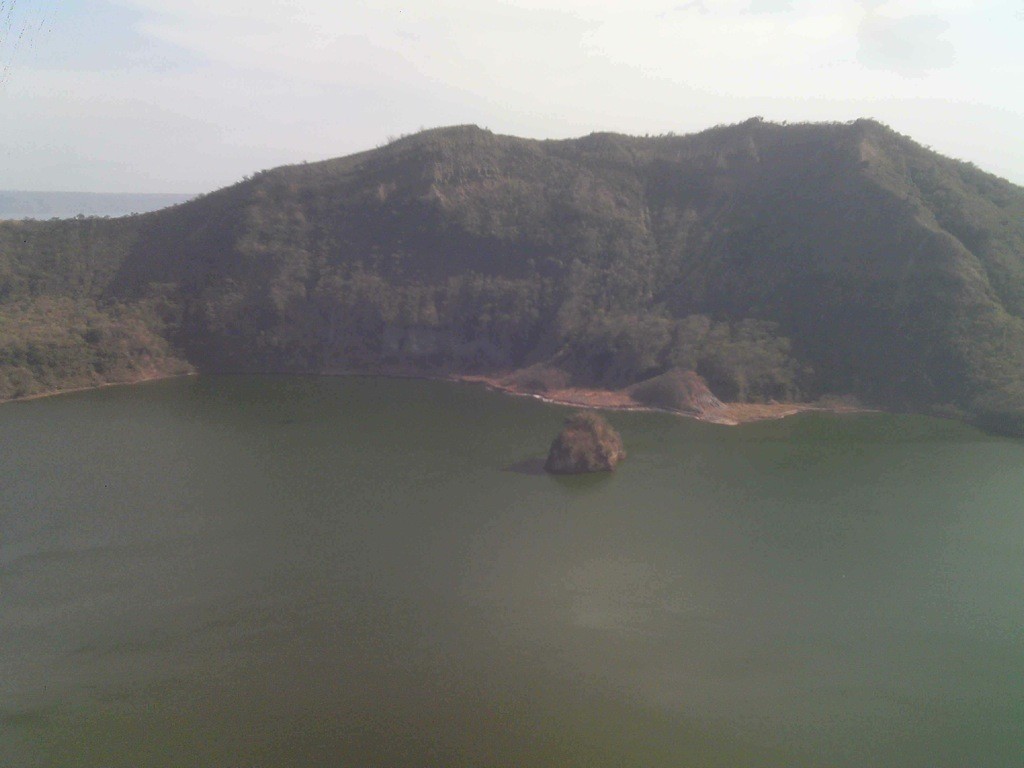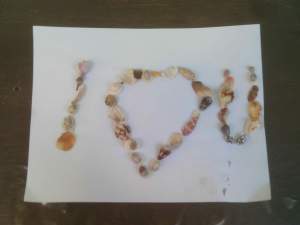Under the Volcano
We have heard about Mount Mayon. A few hundred kilometres north of here, on the island of Luzon, the Philippines, it’s been sufficiently active for folk to be evacuated, with vulcanologists on red alert.
“Mount Mayon is Alert Level Five, now, but going to stage 1,” he says. “And they say that Taal Volcano is Mount Mayon’s daughter. When Mount Mayon acts, the Taal Volcano follows. They are connected, below the ground. Taal erupts, they say, every two years.”
We are staying in Talisay, Granny, Grandpa, Z and me, in a little resort on the shores of Lake Taal. Electioneering — and, my god, they do this stuff well in the Philippines — is in full swing.
Our host, after seventeen years as Vice-Mayor, is standing for Mayor, and tricycles and jeepneys clad in lurid orange posters to and fro, blasting out his personalised theme song, with all the insane catchiness of late-90s Kylie but production values exponentially lower. It is amazing what you can do with an early-80s keyboard and the theme “Luis Malabanan…. more police”.
April the eighth is, eek, my thirty-sixth birthday. And so, we are climbing the volcano.
It has started well. Z was making shell art the other day, with the shells we had gathered on Gaspar Island, and without even knowing it was my birthday had made me this.
We take a bangka out across the lake, which was dry land until 1965, though now the weedy waters, where cages of ten thousand fish float on the surface like so many beads, cover drowned churches, villages and fields, to the ashy shores of the volcano.
And we climb. The standard tourist deal is to ascend the slope on horseback, but this sort of pre-programmed donkey ride is mine and Z’s idea of hell. I realise, a few paces in, that this sort of 4.5km ascent is Granny’s, too.
We progress, trailed by a man on a horse whose sales pitch taps at us like a deathwatch beetle. Z is his initial target. “Baby!!! You want to take a horse?”
Z turns to him. “I am not a baby,” he says, in true Patrick McGoohan style. “I am a boy. And I don’t want to ride a horse. I’ll walk.”
Even the man on the horse is impressed enough to turn his sales pitch to, “Boy! You want a horse?”
The views, as we ascend, are dazzling. Mountains, framed by water, framed by mountains, framed by water. Farmlands spilling away. Necklaces of fish farms. An entirely illogical landscape.
Or, as Michael has it, “It is an island, within a lake, within an island, within a lake, within an island.”
Z proving resistant, the chap with the horse turns his attentions to Granny. “Ma’am! You are tired? You want to take a horse?”
The psychological warfare is having some effect. Granny is concerned that she will slow us down. It is a relatively hot day. I realise, having been through something of the same ego-destructive helpfulness myself, that this is her idea of hell.
She isn’t unfit. But her caballero stalker certainly makes her feel that way.
We are winding up past scalded banana plantations, through shallow channels of striated red and white stone, over layers of volcanic grit and dust, heading towards the Spanish Trail, so called because the lava flow it runs across burst from Taal Volcano during the eruption of 1911. It is unlike any lava flow that Z or I have seen.
Granny, Grandpa and I reminisce about the time we climbed Vesuvius when I was near Z’s age. Z is hoping for white-hot rocks like the ones he scattered water on, on Volcan Pacaya, Guatemala, when he was only four.
“You see the fish farms?” Michael asks. I nod.
“In every cage they have ten thousand tilapia,” he says. “Ten thousand in every cage.”
As I scan the lake, its jagged, low-rise mountain edges, its ripples like the sea, the neat rectangular outlines of the cages like the edges of submerged matchboxes, my head spins through zeroes and ends up with environmental hell.
Quite literally 10 metres short of the 2km mark, where the Spanish Trail takes the gradient down to flat, kites circle over scalded farmlands, and we have covered almost half our lateral distance and 90% of the height, the ratatat salesmanship of the Deathwatch horseman achieves his main objective. Granny cuts a deal, ascends the “horse” and rides, in considerable discomfort, upwards.
Grandpa storms ahead. At over 60, he strikes a pace that I’d find hard to match.
Z and I amble on behind, with Michael. We hit the first sulphur vents, where acrid steam issues from the crumbled rock, turning the soil damp and brown. We test the temperature. Z gobs on the soil. It bubbles, slowly. We watch a while. At his insistence, I throw half our drinking water on the soil. It bubbles. Eventually.
I see a teachable moment.
Unfortunately, I am endeavouring to teach Z science.
“You see the green around that vent?” I say. “The sulphur has turned to copper sulphate.”
“No,” Z says. “Copper sulphate’s blue.”
“Ah,” I say. “You’re right. But you notice how damp the soil is?”
“Yes,” he says.
“What does that tell you about the sulphur?”
“It’s dissolved in steam,” he says, refraining from rolling his eyes at my stupidity. “There’s water vapour and sulphur.”
At the end of the Spanish Trail, we ascend through dazzling miniature canyons, striped like sweeties, head-height or so, punctuated with virulent gusts of steam, the sky a shocking blue.
Stairs, hastily assembled from bags that housed tilapia “growth pellets” and “finishing pellets” packed with volcanic dust, lead up to the crater’s edge.
The view, all four of us agree, vaut le voyage. A deep green crater lake, vulcanologists taking measurements on the edge, white puffs of underwater smoke bubbling under, crusts of gold and white around the edge, with a miniature island in the centre. In front, a crater lake. Around us, a deluged caldera. And in the crater lake, the cutest little volcanic island which will, no doubt, in a century or so, produce its own eruption.
It’s amazing. Gobsmacking. Z climbs everything in sight.
On our return, Granny rejects the horse. She and I walk on ahead with Michael, as Z initiates Grandpa into the science of volcanoes. We learn, to my horror, that Michael is eighteen, AKA half my age. Guiding is a holiday job for him, and tomorrow he will campaign for uncle Malabanan.
“He is tired,” Michael says, looking back at Z, in his outsize straw hat.
Even from this distance, I can see Z’s mouth moving. And moving. And moving. And moving some more. “I don’t think he’s tired,” I say. “He’s talking non-stop.”
“I wish I wasn’t so unfit,” says Granny.
“You’re not,” I say. “You just walked almost 7km in the heat, over tough ground, a lot of it uphill, in crap shoes. That’s honestly not unfit.”
Grandpa and Z arrive. “You really are unfit,” G says.
We take the bangka back. At this time every afternoon, the wind comes off the South China Sea and whips the lake up like the sea.
We bounce over waves, churn up gusts of spray. Z occupies the prow and whoops like a child on a rollercoaster each time we strike a white horse. And so do I. It’s a great birthday, really good.
Thanks to Delicious Baby for hosting Photo Fridays















Amazing birthday! Hello to all. X